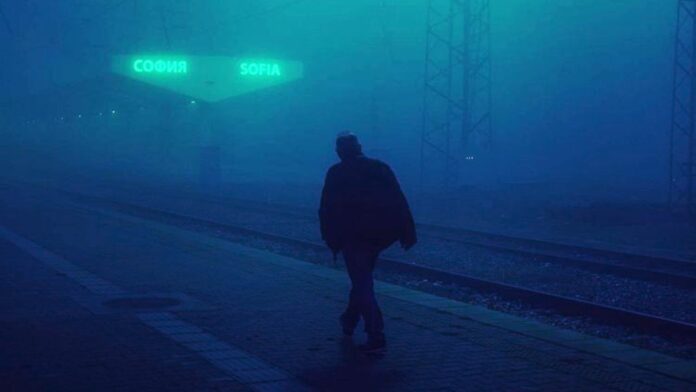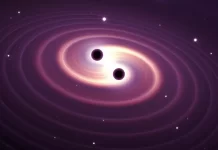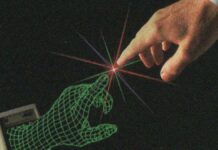When we look at the world around us, we assume that we are seeing it in real-time. However, the truth is that everything we see is actually from the past. This is because our perception of the world is based on the speed at which light travels. Even though the light is incredibly fast, it still takes time to travel from one point to another. This means that the image we see is a delayed version of reality.
The implications of this are fascinating, and they make our understanding of time, distance, motion, and cause and effect. In this article, we will explore these implications in more detail and consider how our perception of the world is affected by the past. We will also consider the implications of this for how we study the universe and how we understand history.
Contents
Everything We See Is Actually From the Past, What Does it Mean?
When we look around us, we see a world that seems to be unfolding in real time. We watch events happen, and we react to them at the moment. But in reality, what we perceive is not happening right now. Instead, everything we see is from the past.
Our perception of the world is based on the speed at which light travels. Light is incredibly fast, traveling at a speed of 299,792,458 meters per second. This means that it can travel around the world almost 7.5 times in a single second. However, despite its speed, light still takes time to travel from one point to another. And this delay is what causes us to see everything from the past.
For example, when we look at the moon, we see it as it was 1.3 seconds ago. This is because it takes light 1.3 seconds to travel from the moon to Earth. When we look at the sun, we see it as it was 8 minutes and 20 seconds ago, as it takes light that long to travel from the sun to Earth.
Even objects that are close to us are not seen in real time. When we look at an object, light bounces off it and enters our eyes. Our brain then processes the information to create an image of the object. But this process takes time. It takes about 13 milliseconds for the brain to process an image. This means that even when we look at objects that are close to us, we are still seeing them from the past.
Implications of everything we see
So what are the implications of everything we see being from the past? There are many, and they are fascinating.
First: our perception of time is not entirely accurate. We perceive time as something that is happening right now, but in reality, it has already passed. This means that our perception of time is always slightly behind the reality of what is happening.
Second: our perception of distance is also affected. When we look at objects that are far away, we perceive them as being much closer than they are. This is because the light that we are seeing has traveled a great distance, and therefore, our brain perceives it as being closer than it is.
Third: our perception of motion is also affected. When we watch a moving object, we perceive it as moving in real time. However, in reality, what we are seeing is the object’s position from the past. This means that the object has moved further than we perceive it to have moved.
Finally: our perception of cause and effect is also affected. When we watch events happen, we perceive them as happening in a linear sequence, with one event causing another. However, in reality, what we are seeing is the events from the past. This means that the cause-and-effect relationship may not be as clear-cut as we perceive it to be.
Even though everything we see is from the past, our brains are incredibly adept at processing this information and creating a seamless perception of the world around us. Our brains take the information that we receive from our senses and create a model of the world that is both accurate and useful.
Our brains are so good at processing information that they can even compensate for delays in the visual system. For example, when we watch a video with a delay, our brains can compensate for the delay and create a perception of real-time.
The fact that everything we see is from the past also has implications for how we study the universe. When we look at objects in space, we see them as they were in the past. This means that by studying the light from these objects, we can learn about the past and how the universe has evolved.
For example, when we look at distant galaxies, we see them as they were billions of years ago, this is because light takes billions of years to reach Earth. By studying the light from these galaxies, astronomers can learn about the early universe and how it has changed over time.
It took 300 years of experimentation and computation to determine the speed of light in a vacuum: 186,282 miles per second. Light will move slightly slower through the air, and some crazy experiments have slowed light to a standstill and made it appear to go backward, but at the scales encountered in our daily lives, light is so rapid that we experience our environment in real-time.
The fact that everything we see is from the past also has implications for how we understand history. When we study historical events, we often rely on accounts from people who witnessed those events. However, these accounts are also from the past, and may not be entirely accurate.
Additionally, our own biases and perspectives can influence how we interpret historical events. This means that our understanding of history may be incomplete or inaccurate. Despite these challenges, studying history is still important. By understanding the past, we can gain insights into the present and make better decisions for the future.
Conclusion
The fact that everything we see is from the past is a remarkable aspect of perception. It highlights the limitations of our senses and the complexities of the universe. Our brains are incredibly adept at processing this delayed information and creating a seamless perception of the world around us. It has also implications for our understanding of time, distance, motion, and cause and effect. It also has implications for how we study the universe and how we understand history.
Furthermore, this delayed perception has profound implications for our understanding of the universe, time, distance, and cause and effect. By studying the light that reaches us from distant objects, we can learn about the history of the universe and how it has changed over time. We can also gain insights into the present and make better decisions for the future by understanding the lessons of the past.
Additionally, this delayed perception has implications for how we study history. The accounts that we have of historical events are also from the past and may not be entirely accurate. Our biases and perspectives can influence how we interpret these accounts, and this can lead to an incomplete or inaccurate understanding of history.
Despite these challenges, studying the past is still important. By understanding the past, we can gain insights into the present and make better decisions for the future. We can also appreciate the beauty and complexity of the universe and our place in it.
Even though our perception of the world is based on information from the past, our brains are incredibly adept at processing this information and creating a seamless perception of the world around us. And by studying the past, we can gain insights into the present and make better decisions for the future.
Sources
- PhysicsCentral. (n.d.). https://physicscentral.com/explore/action/speed-of-light.cfm
- daveachuk. (2015, January 6). Gigapixels of Andromeda [4K] [Video]. YouTube. https://www.youtube.com/watch?v=udAL48P5NJU
- The Fabric of the Cosmos. (n.d.). NOVA | PBS. https://www.pbs.org/wgbh/nova/series/the-fabric-of-the-cosmos/
- The Black Arts: A Concise History of Witchcraft, Demono. . .. (n.d.). Goodreads. https://www.goodreads.com/book/show/354619.The_Problems_of_History
FACT CHECK: We strive for accuracy and fairness. But if you see something that doesn’t look right, please Contact us.
DISCLOSURE: This Article may contain affiliate links and Sponsored ads, to know more please read our Privacy Policy.
Stay Updated: Follow our WhatsApp Channel and Telegram Channel.












